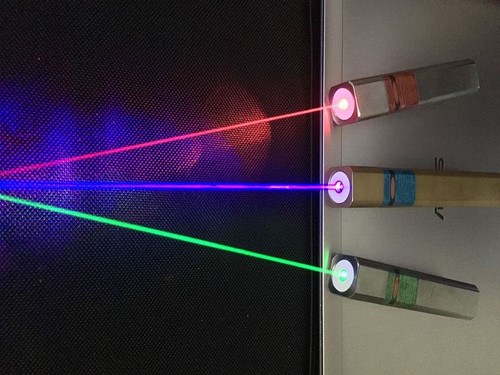Dangers of laser pointers and handheld lasers, which can cause severe injuries
Monday, August 13, 2018
Monday, August 13, 2018
In the past few years, we’ve seen an increase in injuries coming from laser pointers. They sometimes involve severe retinal damage and irreversible blindness. These injuries usually come from misleading or improperly-classified lasers that are openly available on the market.
This is an urgent matter: As of 2019 we were able to list around 100 injuries that were serious enough to be documented in scientific papers. The dangers of laser pointers are real and the situation is not improving.
If we go back in time, we could see a few red laser pointers that were used in classes, but these were generally safe. However, I still remember the first teacher who brought a green laser pointer in class for the novelty effect.
These first laser pointers were meant to be used at night for astronomy. The difference between red and green laser is that you can see the green beam better at night. They weren’t meant to be used by everyone, and the price was quite high.
Now that manufacturers can purchase low-cost laser diodes from dubious origins, we see them overflowing the market.

Source: Wikipedia
If you want to know how dangerous laser pointers can be, it’s mostly because anyone could purchase high power handheld laser that comes with a higher risk compared to the low-power laser pointer. The price and looks are very similar when you order them from a web page. A laser pointer power output is usually under 1 mW. However, a handheld laser could reach 3000 mW. As a comparison point, 5 mW can be enough to cause permanent eye injury!
Keep in mind that exposure time, spot size and localization can make permanent damage to eye and retina, which can lead to blindness. The retina is the part of the eye that is considerably at risk because a laser goes through the transparent crystalline part of the eye and burns the nerve-covered part of the retina.
This area cannot self-regenerate, but it could partially heal over time. The brain can cope for the small spot that was damaged and the person won’t notice the difference more than the blind spot we have from the optical nerve location. Usually, the blink reflex or eye-rolling are protective mechanisms protect the eye against laser less than 1 mW. This class of laser can only cause injuries if the exposure time is longer than 0.25 seconds. This is the typical time it takes for you to blink.
The good part is that the pupil is not very big and we can usually avoid it, but it doesn’t mean that it’s still safe.
Even if we regulate and test laser pointers to ensure they remain under 1 mW, most devices you can purchase from direct resellers who sell them with the best of their knowledge are mistakenly identified as safe, but they do pose a risk.
These laser pointers are usually battery-powered and are more dangerous in the blue or green wavelengths as the output is never precisely the one specified in their documentation.
To achieve different colors, they use a frequency doubler, which means they do not only emit in the color you see but also in the infrared spectrum. This implies they deliver a much higher power than expected, or even specified.
Also, the specifications provided are determined at a specific temperature. This means it is possible to have different and unexpected results with the same laser when it is used in different conditions, such as outdoors, in hot environments, etc.
The best way to be sure is to measure the output with a Gentec-EO photodiode laser power meter.
To satisfy my personal curiosity, I purchased a handheld blue laser pointer from a popular website. It was stated that it would emit 400 mW. I got this for 50 dollars and I tested it with the above Pronto-Si: it delivered less than 400 mW but a whopping 323 mW that could engrave any material at its focal point. I also measured its spot size with a Beamage-3.0: only 110 µm. This is even more dangerous than a 1 kW laser. Why? Because it’s not locked in a safe room that only training staff can access.
This is not a toy and it’s not locked. Are people aware about the dangers of laser pointers like these?
I’m not even talking of those who wants to willfully misuse the laser to attack in a crowd or point a plane in flight such as this kid who pointed his pointer to a CF-18. Transport Canada has more than 600 similar events listed.
To wrap this up, until we can test all the lasers that are available, please do not trust the output specified unless you tested it with a laser power meter.
Special thanks to Patrick Murphy from Laserpointersafety.com helping me review and reference this article! You can also find more information on laser pointers safety on this independent resource: https://laserpointersafety.com/